Shaping Your Future Success with Active Ergonomics
Unbeknownst to many, workspaces have the ability to change the way individuals work. The size of a room, the devices you are using and even your desk – each one has the ability to influence your behavior and can even give foresight to how successful your business will be.
For one, broaden postures that resulted from desk setups helps employees stay assertive. Harvard researchers have said that posture can impact the emotional state of an individual and that learning a power pose can release confidence-boosting hormones before making a speech or entering a negotiation. The same logic can be applied when working. Devices like an iPad or a laptop that leave employees hunched over will be less assertive compared to those with a more open, broad posture from desktop setups.
In addition to this, noisier rooms tend to distract and exhaust people. According to an article by Time Magazine, engaging in small talks can disrupt thoughts and it takes a lot of mental effort to interact with your colleague without losing track of what you were working on before. Moreover, it takes away approximately 27 minutes per distraction.
These are not the only cases that demonstrates the impact offices has on the workforce. Other drawbacks such as work-related injuries and high task repetition are common scenarios found across all industries, emphasizing the importance of office ergonomics.
Ergonomics and Its Benefits
Merriam-Webster defines ergonomics as the applied science concerned with designing and arranging things people utilize in such a way that allows them to interact most efficiently and safely.
Also known as human engineering, it incorporates human data in designing the working environment to increase the comfort, safety and efficiency of workers. Theoretical principles and methods are used to fit the environment to its respective inhabitants instead of the other way around.
Leading companies and other organizations are integrating ergonomics into their operations and the benefits that they offer in return makes it understandable why more and more businesses are investing in improving their workplace ergonomic.
By reducing ergonomic risk factors such as sustained awkward postures and forceful exertions, costly MSDs or Musculoskeletal Disorders are avoided. In the US, approximately $1 out of every $3 in compensations costs are spent on MSDs. Significant costs will saved, not to mention that other indirect spending can go up to twenty times the actual cost.
Another proven benefit is improved productivity. Workstations become more efficient when it allows room for good posture as well as better heights and reaches. Therefore, improving the quality of work produced.
Employee engagement is also improved when they notice the efforts of the company in ensuring their safety and health. It reduces turnover, decreases absenteeism and improves morale.
Companies all around the world are showing more commitment to strengthening their safety culture.
And as the very idea of work changes before our very own eyes, designers, architects and even business organizations are coming up with ways to ensure that ergonomics can keep up with today’s workplace and continue improving the way we work.
Active Ergonomics and The Emerging Workplace
The advancement of today’s technology has allowed us to work freely almost anywhere. Unlike before when a typical day at work is spent in front of a computer screen, professionals nowadays engage in collaborative work made possible by effortless information sharing. This rising trend paved the way for emerging collaborative and social spaces such as shared offices and coworking spaces with casual furnishings that visualizes a calm and lax vibe.
Despite of how popular and effective these spaces are to startups and other organizations, Dr. Michael O’Neill of US furniture giant Haworth have said in a study that the traditional ergonomics is struggling to keep up with the modern workplace.
In his paper entitled Active Ergonomics for the Emerging Workplace, O’Neill says that traditional office ergonomics does not address collaborative spaces. Majority of these shared offices are being created without the appropriate ergonomic guidance, he adds.
There’s a significant probability that today’s workforce are moving between formal and informal spaces – most especially those coming from the younger demographic. And classic ergonomics only concentrates on individual workstations with the presumption that they spend the rest of their day on that same place.
It solely focuses on correcting the employee’s seated posture by taking into consideration other contributing factors such as distance of the screen from their eyes, position of their hands and wrists over keyboards and desks as well as the height of their respective desk.
But now that standing desks, casual sofas, hot desks and informal meeting areas are becoming a common feature to offices, it’s only apt that the discipline of regulation and implementation of classic ergonomics should be rethought.
O’Neill suggests giving active ergonomics a try – a new approach to office design that incorporates a variety of ergonomic principles to the whole environment. Based three areas – anthropometrics, ambients and movement – he defines active ergonomics as the application of sound ergonomic thinking to the entirety of a space instead of solely focusing on individual work areas.
The aforementioned elements can be utilized to improve the safety of today’s collaborative spaces. And though traditional offices are still around, industrial designers have said that incorporating a new take into the classic ergonomics that we have can make people happier in their workplaces.
Is your current office keeping up with the latest trends? If not, we’ll show you a variety of spaces flexible enough to catch up.

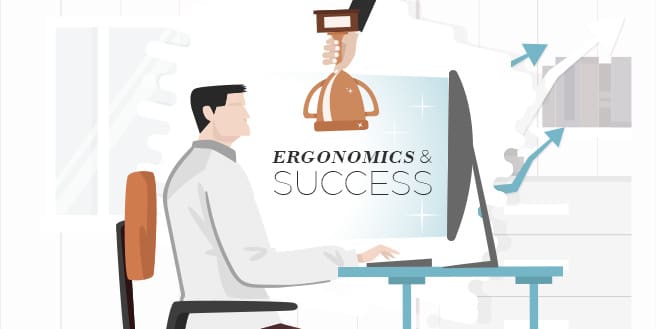


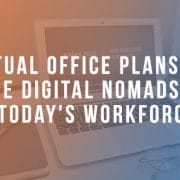
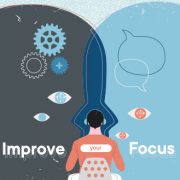

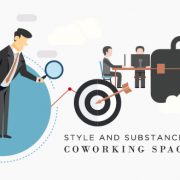
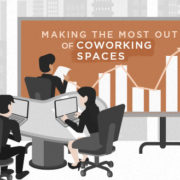




Leave a Reply
Want to join the discussion?Feel free to contribute!